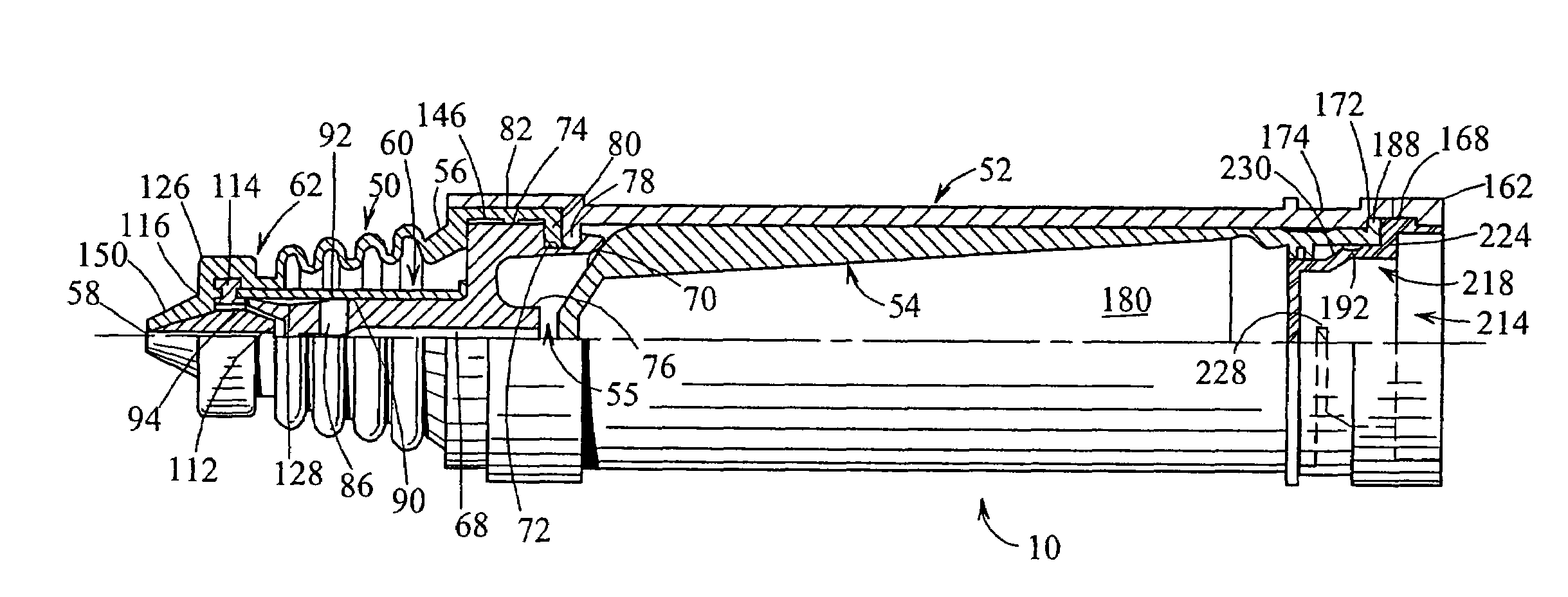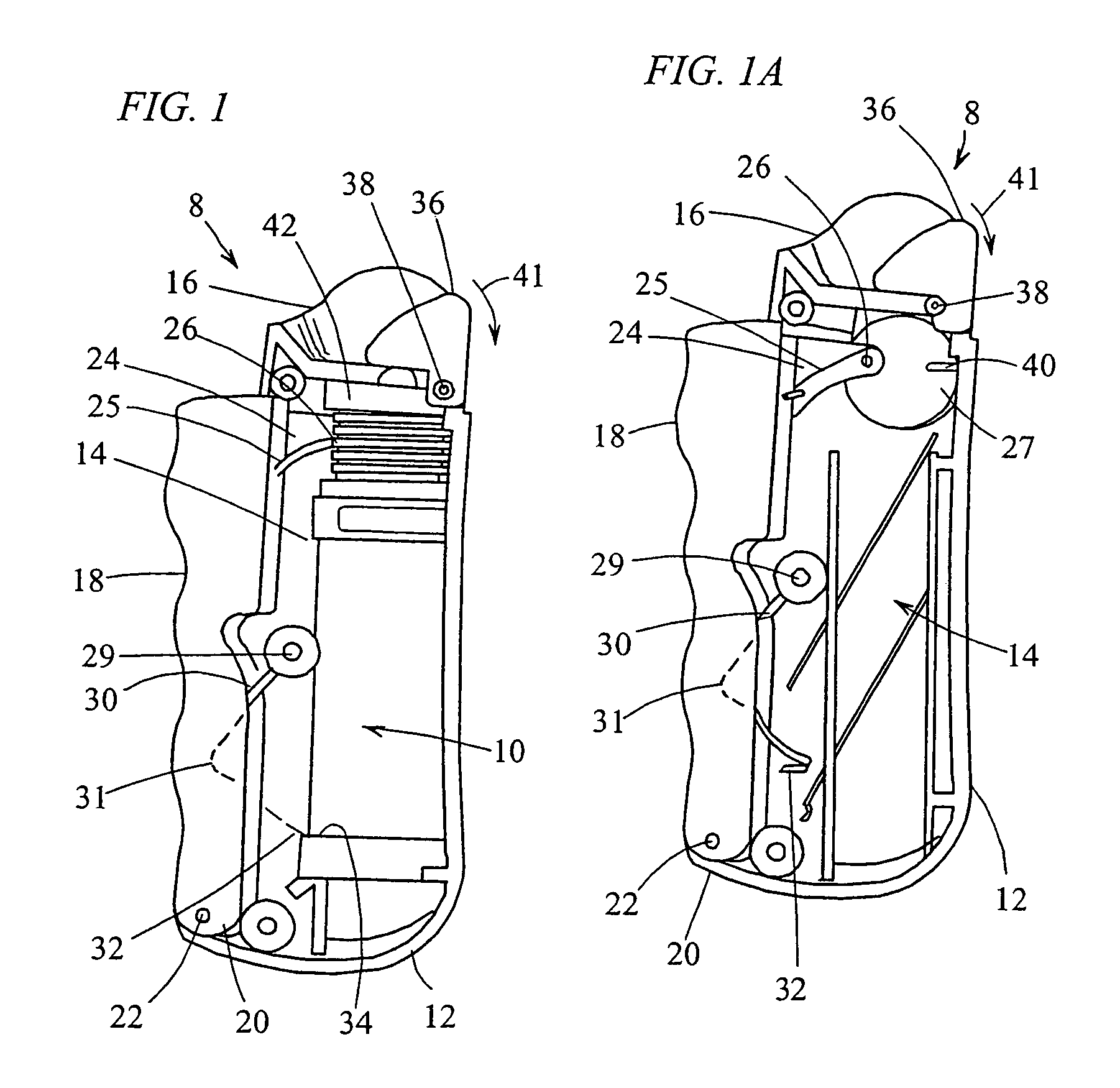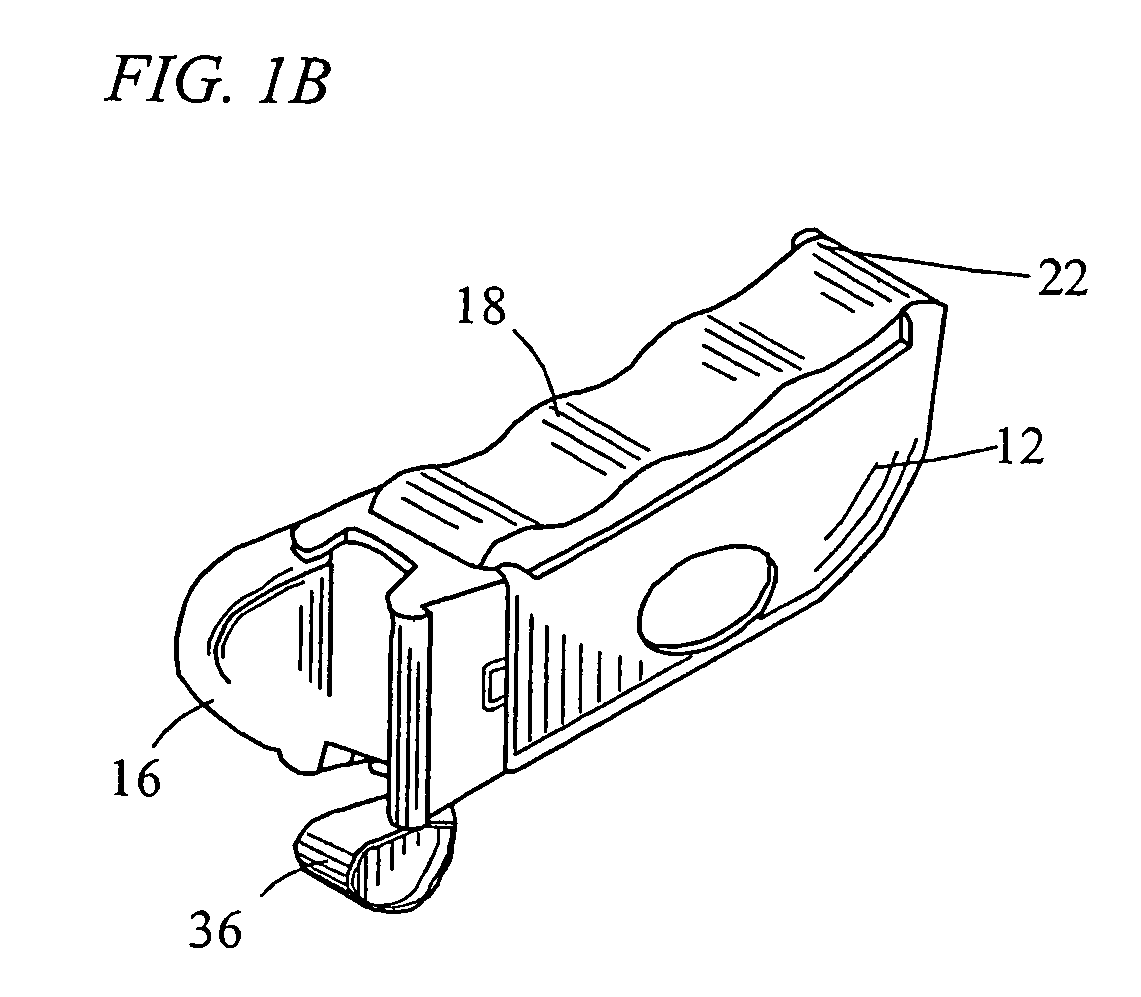Fluid dispenser having a housing and flexible inner bladder
a technology of flexible inner bladder and dispenser, which is applied in the field of dispensers, can solve the problems of vapor loss, nozzles and/or valves used in typical prior art dispensers often being incapable of maintaining the dispenser in a hermetically sealed condition, and vapor loss
- Summary
- Abstract
- Description
- Claims
- Application Information
AI Technical Summary
Benefits of technology
Problems solved by technology
Method used
Image
Examples
Embodiment Construction
[0065]In FIG. 1, there is shown an ocular treatment apparatus 8 that may be used in conjunction with a dispenser, shown generally at 10, in accordance with the present disclosure. As seen in FIGS. 1 and 1A, the treatment apparatus S comprises a housing 12 that may be generally U-shaped in cross section, and defines an interior cavity 14 and an eye cover 16. A trigger 18 is pivotally connected at one end 20 to the housing 12 via a hinge 22, and includes at the other end an arm portion 24 defining a slot 25. As shown best in FIG. 1A, a pin 26 of a wheel 27 is fixedly secured within the slot 25, and the wheel 27 is rotatably mounted on the interior wall of the housing 12. As best seen in FIG. 1, the trigger 18 is elongated and comprises finger grooves 28 for a comfortable fit with, e.g., a patient's hand. An approximately L-shaped spring arm 30 is fixedly secured at one end to a post 29 projecting inwardly from the interior wall of the housing 12, and the spring arm defines a knee or b...
PUM
 Login to View More
Login to View More Abstract
Description
Claims
Application Information
 Login to View More
Login to View More - R&D
- Intellectual Property
- Life Sciences
- Materials
- Tech Scout
- Unparalleled Data Quality
- Higher Quality Content
- 60% Fewer Hallucinations
Browse by: Latest US Patents, China's latest patents, Technical Efficacy Thesaurus, Application Domain, Technology Topic, Popular Technical Reports.
© 2025 PatSnap. All rights reserved.Legal|Privacy policy|Modern Slavery Act Transparency Statement|Sitemap|About US| Contact US: help@patsnap.com



